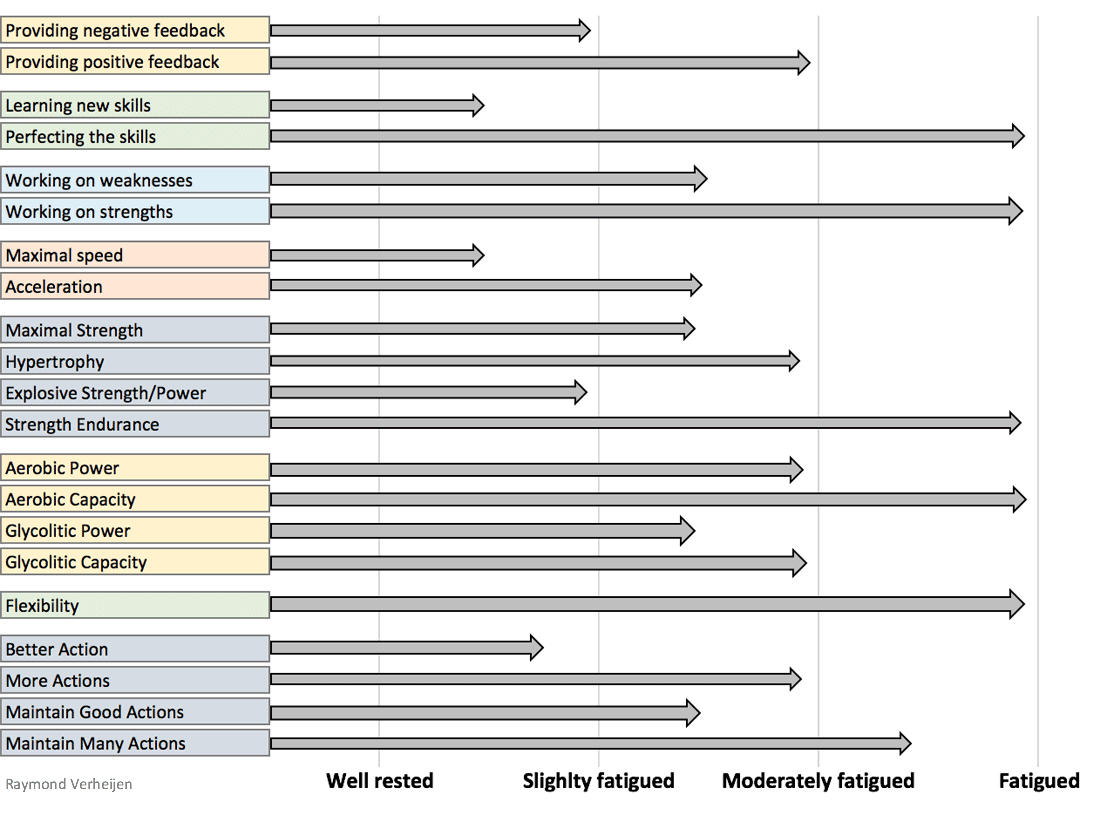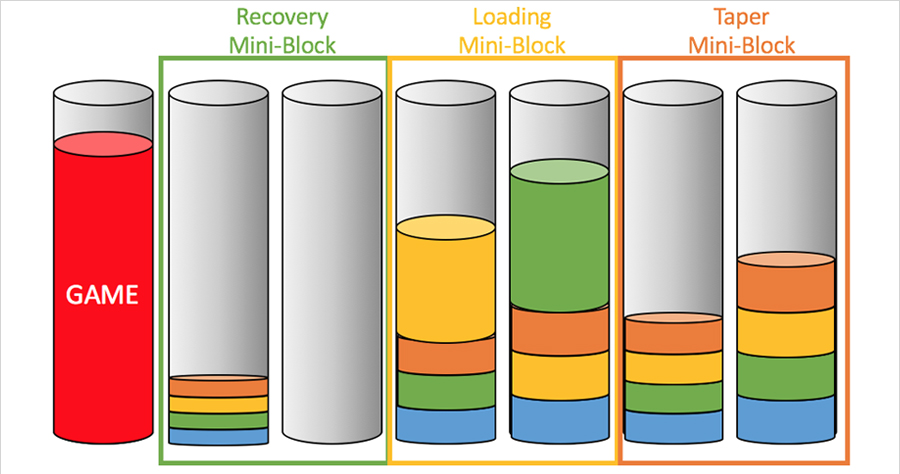Physical Preparation for Team Sports: Weekly Plans – Part 5
Previus Part:
Physical Preparation for Team Sports: Weekly Plans – Part 4
In this part I am continuing the discussion on football and non-football related content, especially the “right” time to develop certain quality, appropriate combination of qualities to avoid interference between them, the concept of micro-dosing, how to vary training (and the concept of saturation~variation), and the use of heuristics in uncertain world of sports planning and decision making.
What to do when?
In the recent years I started looking at the warm-up not as “separate” part of the workout that has it’s own objectives, but as something that CAN and SHOULD be done at that current state of the organism that helps you reach workout and training objectives, while preparing you for the work to come.
I guess that this can be expanded to other training components as well. When deciding on what can and should be done, we need to take into account the athletes current state and how they are receptive for a given stimuli. Potential problem here is that not all athletes are in the same state, but we still need to perform team sessions. Therefore the training design needs to take this into account by being flexible and agile. Since things can get very complex, the solution is not to have some crazy optimization algorithm, but to rely on simple strategies – heuristics. More on this topic (individual vs. team) in the future chapter.
On the following picture there are recommendations on when certain qualities can be DEVELOPED. All qualities can be PERFORMED pretty much all the time (sometimes that is even advisable, for example micro-dosing the speed work 1 on pretty much every day), but they cannot be truly developed every day due fatigue levels and injury likelihood (for example, you can make athlete do sprint on the D+2, but the quality of those sprints will be sub-par and the tissue capacity to handle loading would be compromised from the game, so the likelihood of injuring someone would be higher). So there exists optimal timing when we can really load them (i.e. do the hard session) and create developmental stimuli (as opposed to retaining/maintaining qualities). This is pretty much one of the aspects of develop/express complementary pair.

Figure 15. When to develop certain qualities
In team sports, due frequent competitions and uncertainty of athlete responses (and risk of injury), we usually never push the envelope (i.e. saturate) a given characteristic, which means that the below rules are more “weaker”, but it is still advisable to keep them in mind. So, one of the heuristics could be “Never over-dose individual characteristics – micro-dose everything” – this would be very conservative and robust strategy. To paraphrase Derek Hansen 1:
“you can still achieve significant benefits with micro-dosing, while minimizing the unwanted side-effects.”
“The key is to prescribe the right amount of work at the most optimal times to elicit a positive training response, but avoid placing too much stress on the athlete that can be compounded by the rigors of practice.”
In other words, from a risk perspective, it is advisable to avoid extremely hard and saturated training sessions. There are sessions where we create an overload on a given quality/characteristic (e.g. conditioning day), but that load is never extreme.
To quote Derek Hansen again 1:
“Once again, the volume of work is not so high as to create excessive fatigue, but high enough to elicit a desirable response.”
Micro-dosing concept is also useful approach when dealing with real-world coaches, who might not be very receptive to our “optimal days and loadings” to develop certain qualities. Hence, micro-dosing represents very robust strategy in uncertainty. Not biologically optimal, but very realistic that get’s the job done.
Micro-dosing can also be used with other qualities, like leg power and leg strength, for example using individually prescribed short (or should I say micro) training sessions for athletes to do on their own time (either before or after workouts), similar to individual prehab/injury prevention programs. For example, athletes can perform 1-2 compound lifts, where Dan John’s Rule of 10 2 can be applied when it comes to total number of reps. Consistency beats load. This type of work can be prescribed alongside with “true” team-based strength training session and aim in solving individual/team dichotomy.
Going back to the above diagram of optimal states to develop characteristics, I’ve also used Raymond Verheijen 3 objectives for soccer fitness.
Long story short, the simple heuristic would be “if you want to develop quality (or intensity, as opposed to quantity or extensibility/extensiveness) of certain characteristic or learn a new skills, then do it when athletes are “fresh”; if you already have quality in place, make athletes be able to express it in more strenuous conditions and extend that quality”. Or, “If it is important, do it first, and often”.
The question to be asked is what is the time frame for such recommendations – is it a training session, training day, or micro-cycle? I believe that “fatigue” have multiple waves and the heuristic can be applied on different time scales – do the speed work and learn new movements early in the session, and early after the recovery mini-block.
But fatigue is only part of the story. We need to consider “facilitation” as well. For example, after a day off, athletes are not very “receptive” for learning new things and they need to warm-up their engines 3, so the first session should be more extensive to “wake” them up. This neuro-muscular readiness and receptiveness is needed every time we perform high-quality (i.e. high-intensity) training. For example, performing maximal sprints right off the bat, without the warm-up, even if the athletes are least tired, is not the wisest strategy since their systems are not ready. But we can perform running and control drills and help in increasing speed objective while preparing the athletes to perform the real thing (hence my rant on warm-up at the beginning). This can be extended to the micro-cycle as well, especially the loading mini-block, where the first day should never be “HARD” day, but again that depends on what precedes it.
Another usefulness of micro-dosing is, besides doing it all the time and avoiding down-sides (soreness, injuries) and getting some upside (performance benefits) – which is very antifragile strategy – is that when the opportunity arises we can, without fear and risk, ramp up the volume and use that to saturate given quality, since the athletes are already used to performing certain type and quality of work.
Long story short – refer to the above graph for optimal state to do things, but try not to create extreme fatigue in athletes and micro-dose training. Here are the recommendations by Derek Hansen 1:
- Get your speed work done before practice or in the early part of practice as part of a warm-up sequence.
- Always be mindful of technical considerations.
- Don’t be afraid to do less.
- Educate your athletes on the benefits of micro-dosing these training activities.
- Always consider the “general” benefits of the work you are prescribing.
“The key is to find the correct amounts of high intensity work required to move the athletes forward and not backwards.”
[EDIT] Here is the recent video of Derek discussing the concept of micro-loading











Responses